Welcome to the VDP.Pfalz
Wines – as if kissed by the sun
Pampered by a fabulous 1.800 hours of sunshine a year, this is a breeding ground for grand unmistakable dry wines. It is cool enough for elegant and delicate wines, yet also warm enough for power and full-bodied balance. The soils themselves contribute, giving root to the taste profiles appropriate for world-class wines: Over the centuries, many small vineyard sites with numerous and special soil types have developed in the Pfalz. It is important to preserve these vineyards and vines – that's why it's important to be gentle with nature: Even back in the 1990s, all VDP.Estates in the Pfalz committed themselves voluntarily to work in a controlled, environmentally friendly manner in the vineyards. In the meantime, two thirds of the wineries are now certified organic. And the trend is pointed upward! First place among the regions …
SPOILED BY THE SUN ...
The Palatinate, or Pfalz in German, is one of the largest VDP.Regions. Its many vineyards stretch for nearly 85 kilometers along the German Wine Route between the Haardt Mountains, which provide wind and shade, and the Palatinate Forest in the east and the Rhine in the west. To the north it borders on the southernmost sites of Rheinhessen, to the south it extends to Schweigen on the border with Alsace. And the Pfalz is spoiled with sun: with 1.800 hours of sunshine, it is one of the warmest regions in Germany – the Rhine Plain, over which warm air flows from the south into the Pfalz, does the rest. The soils are notable for the large number of different soil types – geologically, the region is characterized by the collapse of the Rhine Graben and the associated shifting of rocks. Limestone, clay, and basalt can all be found here.
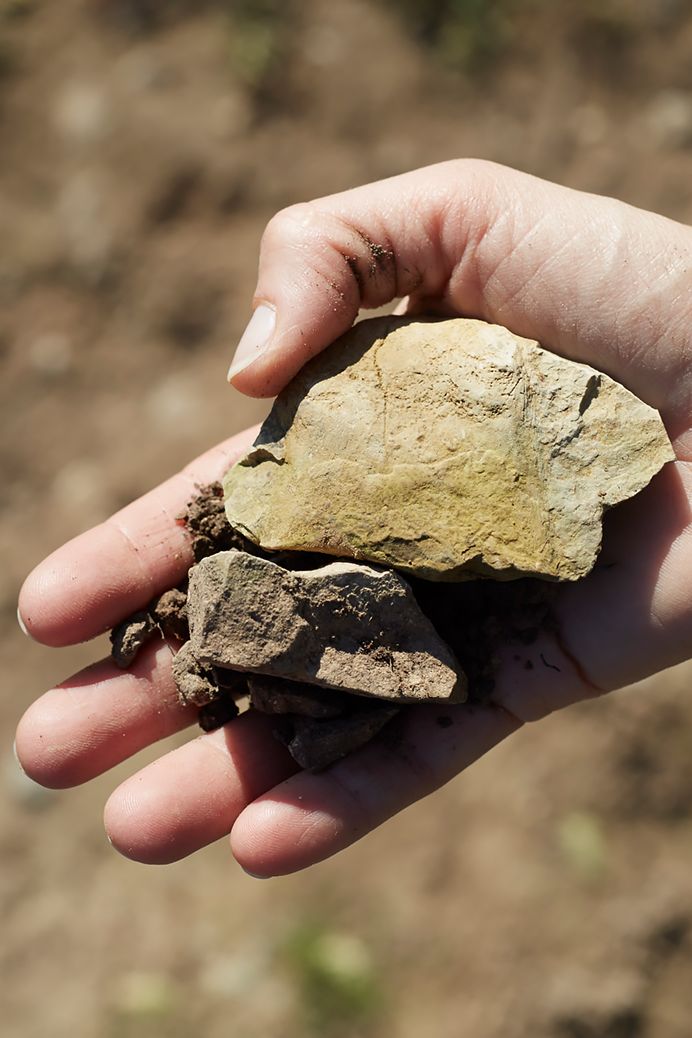
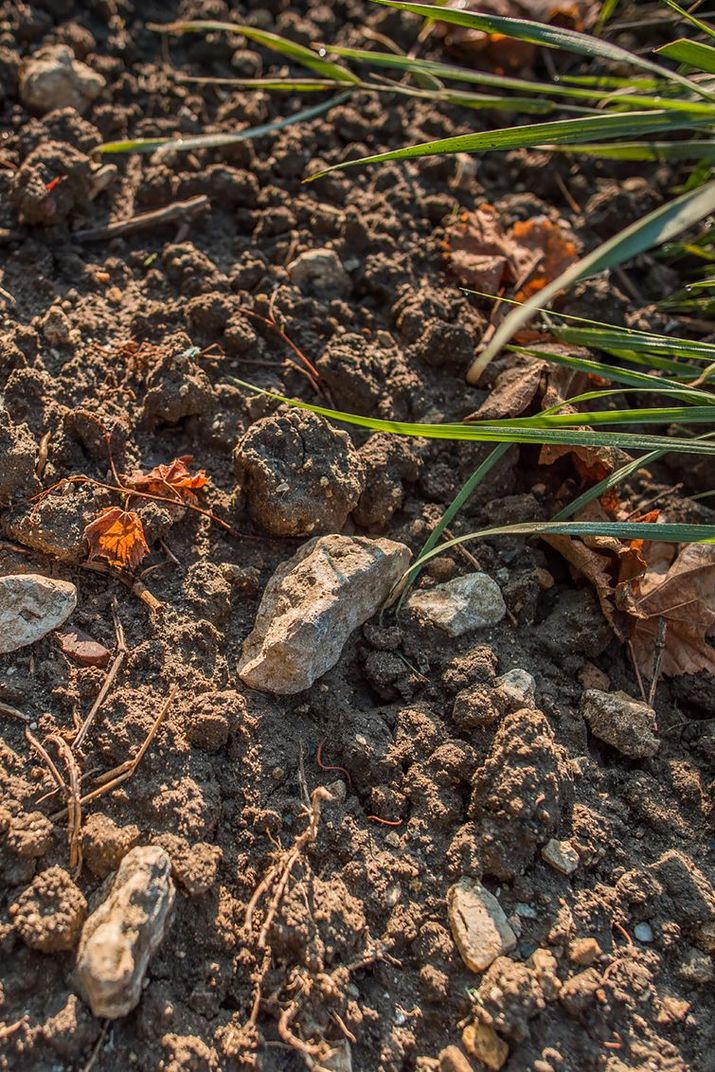
From Kallstadt via Ungstein to Bad Dürkheim, the premium sites are located on a limestone reef, while from Wachenheim to Gimmeldingen, sandstone weathered rock is what defines the soils.
The main focus in the Mittelhaardt region is traditionally on Riesling.
South of Neustadt, the Pinot family of grapes play just as important a role as Riesling, and in fact some of the member estates have achieved quite a sensation with these wines in recent years. Shell limestone soils offering very good conditions for the production of grand Spätburgunder, Grauer Burgunder and Weißer Burgunder wines are often found here. But there are also very special terroirs for Riesling in the south, such as the VDP.GROSSE LAGE® KASTANIENBUSCH in Birkweiler, which features "red slate" stones from the special Oberrotliegend earth.
THE ORIGIN OF THE VDP
HOW IT ALL BEGAN ...
In the words of Dr. Otto Weingarth, managing director of the former Verein der Naturwein-Versteigerer der Rheinpfalz: "Around the turn of the century, the larger estates agreed to give the auction wine the designation ‘natural wine’ in order to emphasize its special position among the wines. This agreement marked the first step towards an organized association of natural wine producers who were willing and able to produce pure natural quality wines year after year and to auction or otherwise sell them in their pure state" (from: "Ein Jahrhundert Weinversteigerungen," 1940).
1908 | JOINT APPROACH TO AUCTIONS
On October 8, 1908 the Verein der Naturwein-Versteigerer Rheinpfalz was founded in Saalbau in Neustadt. The members committed themselves to the "promotion of viticulture, regulation of the conditions for wine sales, and in particular the wine auctions." Membership was open only to winegrowing estates and winegrowers' associations in the Rheinland-Pfalz, "which sold exclusively natural wines they had pressed themselves."
In addition to the initiators Schellhorn-Wallbillich and Dr. Bassermann-Jordan, founding members included the ancestors of current members Acham-Magin, Dr. Bürklin-Wolf, Reichsrat von Buhl, von Winning (Dr. Deinhard), Fitz-Ritter, Karl Schaefer and Georg Siben Erben. According to the wine laws of 1901 and 1909, only "the drink produced from the juice of the fresh grape by alcoholic fermentation" could be described as ‘natural wine.’
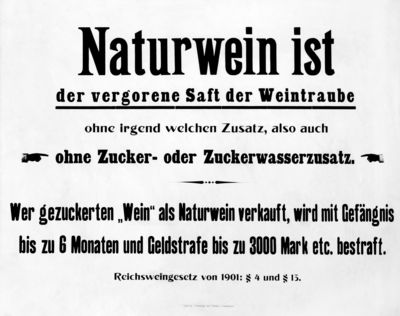
from 1918 | CRISIS YEARS AND POOR SALES
After the First World War, the economic situation in the winegrowing regions between 1918 and 1930 was marked by the French occupation. Trade was severely restricted. The customs frontier on the Rhine, for example, prevented any hope of sales to buyers on the right bank opposite. The poor harvest of 1932 further heightened the situation. That vintage appeared on almost no auction lists.
1910 | FOUNDING OF THE "VERBAND DEUTSCHER NATURWEIN-VERSTEIGERER”
On March 20, 1910, Prince Regent Luitpold granted the association legal capacity in accordance with Section 22 of the German Civil Code. In that same year, the association trademarked its logo. On November 26, 1910, the Rheinland-Pfalz Naturwein-Versteigerer merged with the winegrowing regions of Mosel, Saar and Ruwer, Nahe, Rheingau, Hessen and Baden to form the transregional "Verband Deutscher Naturwein-Versteigerer." The association jointly presented its products at the Brussels World Fair of 1910 and received a "Grand Prix" for it.
ab 1918 | KRISENJAHRE UND ABSATZSORGEN
Nach dem Ersten Weltkrieg war die wirtschaftliche Situation in den Weinbaugebieten zwischen 1918 und 1930 durch die französische Besetzung geprägt. Der Handel unterlagen hohen Einschränkungen. Durch die Zolllinie am Rhein fiel beispielsweise das rechtsrheinische Absatzgebiet weg. Hinzu kam eine Missernte in 1932. Der Jahrgang erschien kaum in einer Versteigerungsliste.
DAS ERSTE VEREINS-WAPPEN
Dr. Ludwig Bassermann-Jordan kreierte das erste Wappen des Vereins der Naturweinversteigerer. In einem kreisförmigen Schild befand sich aus einem Untergrund von Trauben und Rebenblättern oben das Wappenschild des Fürstbistums Speyer (ein silbernes Kreuz in blauem Feld), heraldisch rechts das Wappenschild der Kurpfalz (der goldene, rotbewehrte Löwe im schwarzen Feld) und links das Wappenschild von Leiningen (drei silberne Adler im blauen Feld). Das Wappen durfte nur von Vereinsmitgliedern getragen werden. Das erste Wappen setzte sich aus den Wappen der drei ehemals wichtigsten Territorien des pfälzischen Weinbaus zusammen.
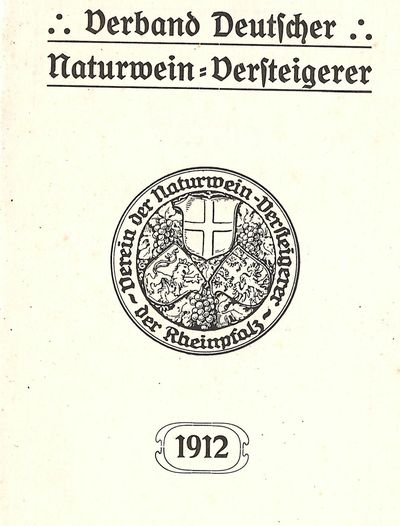
THE FIRST ASSOCIATION COAT OF ARMS
Dr. Ludwig Bassermann-Jordan created the first coat of arms for the Verein der Naturweinversteigerer. In a circular shield the coat of arms of the principality of Speyer (a silver cross in a blue field) was placed atop a background of grapes and vine leaves, heraldically on the right the coat of arms of the Electorate Palatinate (a golden lion with red armoring on a black field) and on the left the coat of arms of Leiningen (three silver eagles on a blue field). The coat of arms could be borne only by association members. The first coat of arms consisted of the coats of arms of the three formerly most important territories of Pfalz viticulture.
1926 | BIRTH OF THE GRAPE EAGLE
In 1926, the Verband deutscher Naturweinversteigerer e.V. created a legally trademarked logo in the form of a stylized imperial eagle with grape and the inscription V.D.N.V. At this time, 52 estate owners as well as 21 winegrowers' cooperatives and winegrowers' associations from the area between Freinsheim and St. Martin belonged to the association.
1932 | VITICULTURE STRUGGLE FOR SURVIVAL
The record harvests of 1934 and 1935 were followed by a dramatic drop in prices. Many winegrowers struggled with financial difficulties. One newspaper reported: "The prices achieved – apart from some top wines or wines for which the name was the reason for a higher valuation – were so low that by far the production costs could not be covered from the proceeds. If, nevertheless, the contract was awarded at such prices, this shows that even at the larger wineries the need for cash is hardly less than for small winegrowers. The number of fuder casks that went unsold was greater than in all previous auctions."
1935 | GERMAN WINE ROUTE PROVIDES UPSWING
With the creation of the German Wine Route, District Superintendent Josef Bürckel successfully promoted sales within a short time. When Bürckel carried out his opening trip from Schweigen to Bockenheim on October 20, 1935, many winegrowers cheered him on, including many members of the Verein der Naturweinversteigerer. The logo of the German Wine Route: Black grapes on a yellow background.
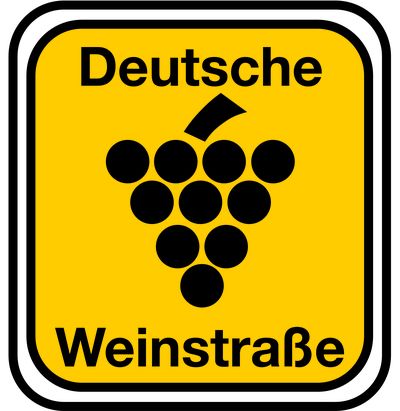
1948 | REBUILDING OF THE ASSOCIATION
The association was suspended during the Second World War. Rebuilding only began after the new state government approved the statutes of the Verein der Naturwein-Versteigerer der Rheinpfalz on September 15th 1948. The 67 members at that time committed themselves "to protect and promote the interests of the producers of the natural wines from the Pfalz winegrowing region." This was to be achieved in particular through the following measures: Regulation of the auction dates and conditions, joint advertising, attendance at exhibitions at home and abroad, supervision of the wines of the members by representatives, other questions regarding the wine sales of its members, knowledge exchanges in the area of viticulture, wine treatment and wine utilization as well as consultation of the members.
1955 | WINE COOPERATIVES LEAVE THE ASSOCIATION
The articles of association are amended to read "Members of the association can only be associations whose members exclusively produce naturally pure wines from their own natural cultivation and which auction or otherwise sell them in a naturally pure state." In practical terms, this change meant the end of membership by winegrowers' cooperatives.
1958 | PFALZ LEADS AT THE VERBAND DEUTSCHER NATURWEIN-VERSTEIGERER
In 1958, Dr. Albert Bürklin wrote: "Both in terms of the number of members and the extent of ownership, the Pfalz Association is at the top of the list of associations united within the Verband Deutscher Naturwein-Versteigerer. At that time, the association had 54 members with 1.889 hectares of vineyards. On the occasion of the 50th anniversary, a large auction took place on March 17-18, 1959 at the Deidesheim winegrowers' cooperative. "All wines to be sold there," it was said, "are natural, the auctioneers' own growths and come from the best sites of the Mittelhaardt."
1971 | THE END OF NATURAL WINE
The new wine law of 1971 forbid the use of the "natural" indicator. From then on, the quality of the wine was to be determined solely by Öchsle degrees. In light of the abolition of "natural wine," the dissolution of the association was also discussed. A National General Assembly was convened for this purpose, but the members instead voted in favor of sounding out the association's chances of survival.
1972 | THE VEREIN DER PRÄDIKATSEINGÜTER DER RHEINPFALZ IS FOUNDED.
1972 saw the "Verband Deutscher Naturweinversteigerer" discuss new potential names. "Mosel and Pfalz defended the word 'Prädikatswein,' because it would correspond more to the tradition of the old natural wine auctioneers," read the minutes of the general meeting of September 29, 1972. After long debate it was finally agreed that the new name would be the "Verband Deutscher Prädikatsweingüter e.V." In 1975, following the departure of the cooperatives, the church-held estates and teaching institutions, the Pfalz association now renamed itself "Verein der Prädikatsweingüter der Rheinpfalz e.V." (VDP.Rheinpfalz). At that time, there were 20 member estates.
1991 | VDP ADOPTS STRICT QUALITY RULES
A new era begins. The VDP estates introduce strict production rules (reduced harvests, increased must weights and marketing rules), and it becomes obligatory to use the association logo on the capsule. Compliance with these rules is monitored through routine inspections.
1994 | LAUNCH OF A CLASSIFICATION SYSTEM
The VDP wine estates seek to correct the misguided development of the German wine law through further self-restrictions. After a fierce discussion, it was decided that large vineyard block names would no longer be used for labeling of wines. The emphasis on selective manual harvests is promoted in response to the increasing use of harvesters. The VDP decides to develop its own independent classification of the German vineyard sites.
2002 | THE FIRST CLASSIFICATION STATUTE
The VDP decides on an internal classification system for the association. It is a mixture of the best elements of the Romanesque and German winegrowing traditions. The capsule with the grape eagle stands for a classification of wineries based on the Bordeaux model.
2012 | THE VDP.QUALITY PYRAMID IS INTRODUCED
On the basis of the association’s own internal vineyard classification system, the VDP.Estates ratify the use of the VDP.GUTSWEIN, VDP.ORTSWEIN, VDP.ERSTE LAGE® and VDP.GROSSE LAGE® designations.
THE CHAIRMAN OF THE VDP.PFALZ
With Dr. Alfred Bürklin as its chairman, "die Pfalz" not only chained its star to the highly effective chairman of the VDNV from its years of reconstruction, but also one of the most respected and influential winegrowing politicians in Germany through the late sixties.
1908-1910 Emil Bibel, Forst
1910-1913 Leopold von Winning, Deidesheim
1913-1932 Theodor Wand, Neustadt
1932-1939 Dr. Albert Bürklin, Wachenheim a.d.W.
1939-1949 Adam Kölsch, Ruppertsberg
1949-1963 Dr. Albert Bürklin, Wachenheim a.d.W.
1963-1967 Franz Schädler, Ruppertsberg
1967-1999 Wolfgang Siben, Deidesheim
since 1999 Hansjörg Rebholz, Siebeldingen
Board of directors of the VDP.Pfalz
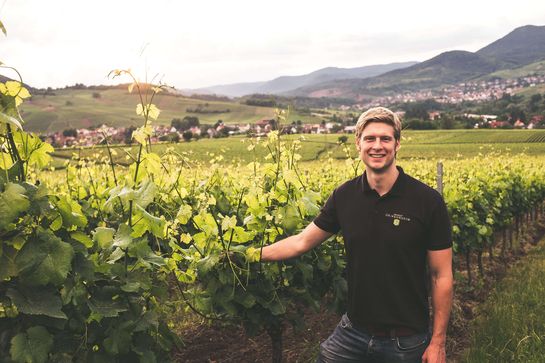
CHAIRMAN
FRANZ WEHRHEIM
VDP.Estate Dr. Wehrheim
Weinstraße 8
76831 Birkweiler
Tel: +49 (0)6345/3542
Mail: wein@weingut-wehrheim.de
DEPUTY CHAIRMEN
HANS REBHOLZ AND ANDREAS RINGS
VDP.Estate Ökonomierat Rebholz
Weinstraße 54
76833 Siebeldingen
Mail: wein@oekonomierat-rebholz.de
Tel.: +49 (0)6345/3439
VDP.Estate Rings
Dürkheimer Hohl 21
67251 Freinsheim
Mail: info@weingut-rings.de
Tel.: +49 (0)6353/2231
Kontakt zum VDP.Pfalz

OFFICE VDP.PFALZ
CARINA SPERBER
Weinstraße 35
76833 Siebeldingen
Mail: info@vdp-pfalz.de
PHONE: +49 (0) 6345 9594403
Fax: +49 (0) 6345 9597181
VDP.WINE CLUB OF THE VDP.PFALZ
Would you like to become a member of the VDP Wine Club? Admission is free and will keep you up to date on all news concerning the VDP.Pfalz.
REGISTRATION:
Click here to register: www.vdp-weinlcub.de



probieren

